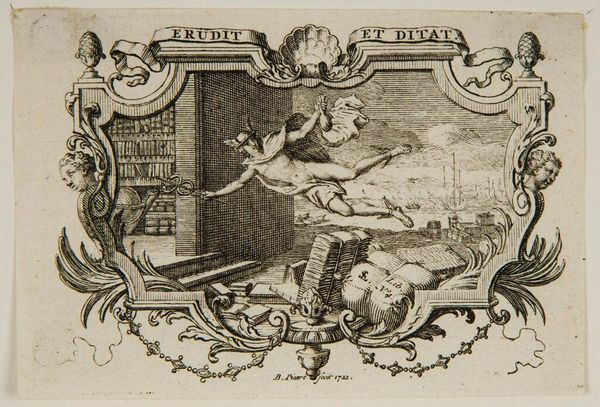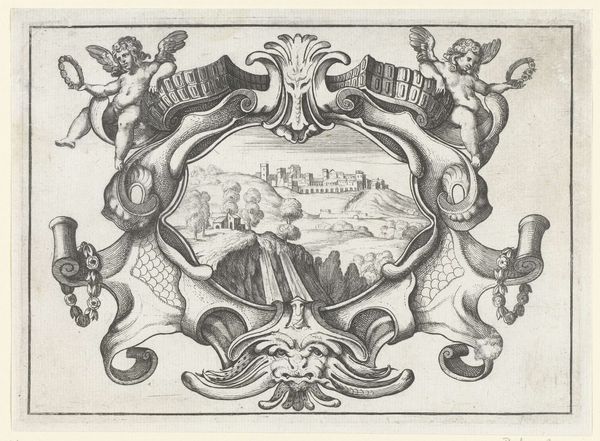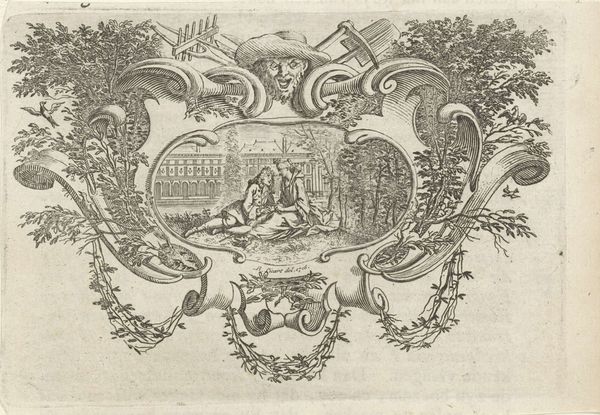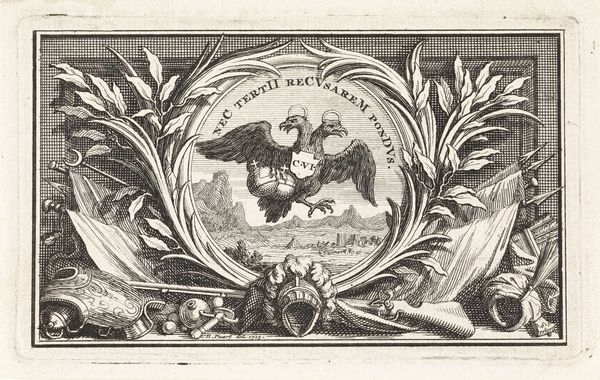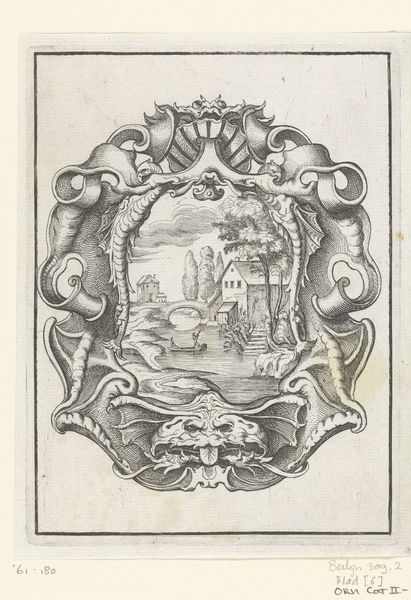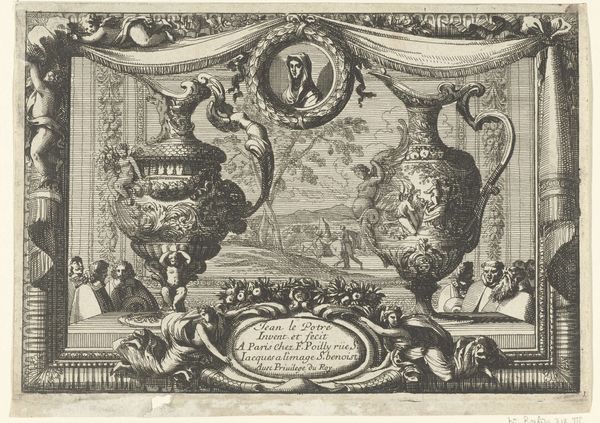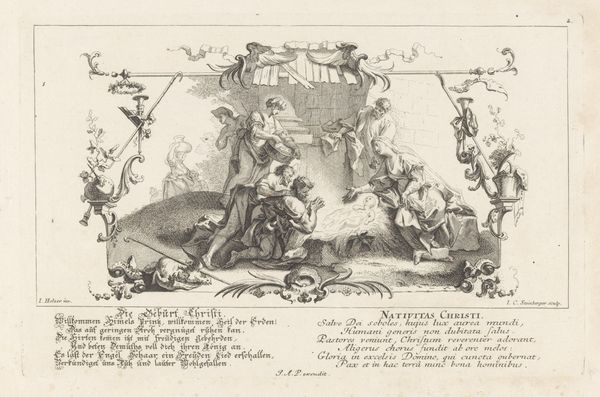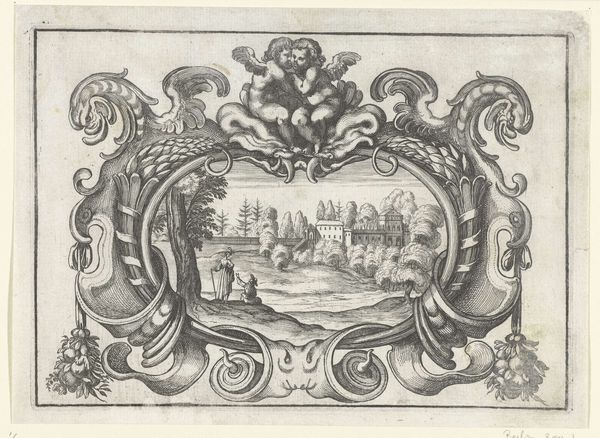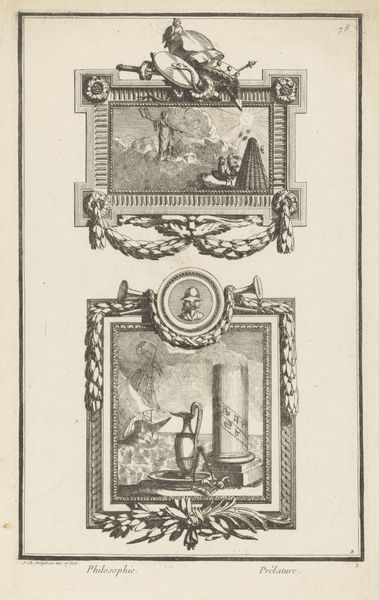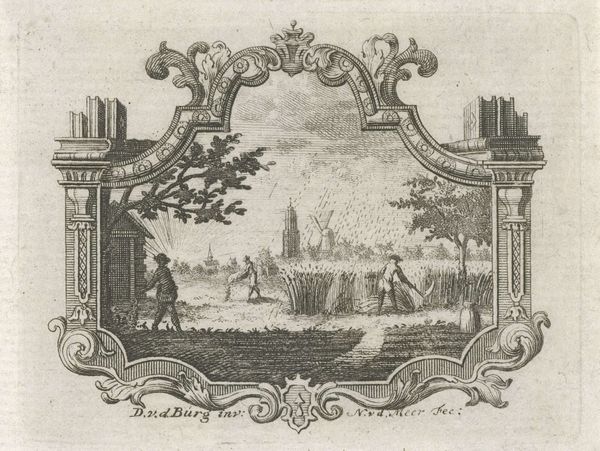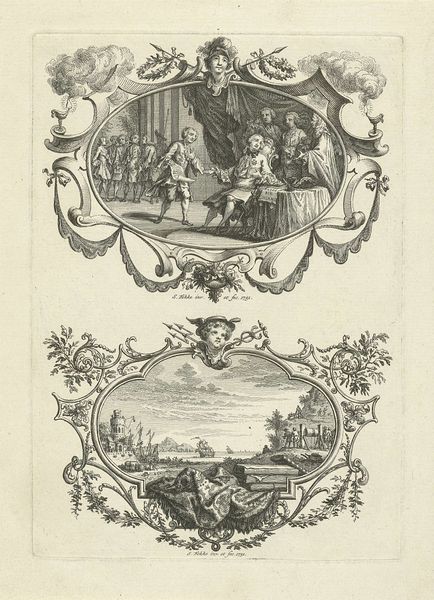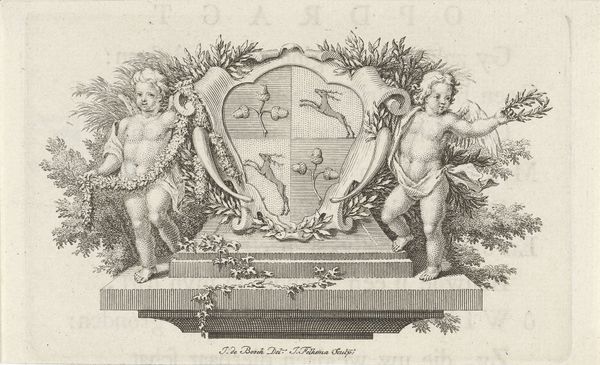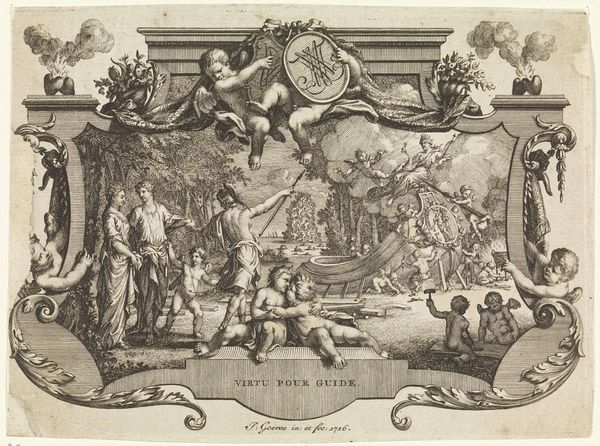
print, engraving
#
allegory
#
baroque
# print
#
history-painting
#
engraving
Dimensions: height 61 mm, width 92 mm
Copyright: Rijks Museum: Open Domain
Curator: Let's turn our attention to this intriguing print, "Mercurius als god van de geleerdheid en handel," or Mercury as god of learning and trade, created by Bernard Picart in 1722. It's currently part of the Rijksmuseum's collection. Editor: It strikes me immediately as a kind of visual portal. Mercury leaps forth, practically bursting out of the image's confines. The monochrome palette feels very formal. Curator: Yes, it’s fascinating how Picart, working in the Baroque style, uses engraving to illustrate the connections between scholarship and commerce within a highly stylized frame. This was a time when trade and intellectual pursuits were seen as increasingly intertwined, especially in a mercantile power like the Dutch Republic. Editor: Absolutely. Look at the details – Mercury’s caduceus, symbol of commerce, points directly from a library into a bustling harbor scene with ships. Knowledge, symbolized by the overflowing bookshelves, quite literally fuels prosperity and trade represented by the sailing ships on the right of the picture. This god mediates, offering pathways between tangible knowledge and maritime power, the written word, and active commercial pursuits. The objects in each foreground corner show erudition on the left with shelves of books, and a warehouse with labelled shipments of goods. Curator: The image's caption, Erudit et Ditat, Latin for "it teaches and enriches," emphasizes that relationship explicitly. Picart was operating within a system of patronage where art often served as a tool for reinforcing dominant social ideologies, so celebrating this relationship makes perfect sense. The print underscores the cultural value of education and commerce and their contributions to society's wellbeing. Editor: But what’s interesting to me is Mercury's seemingly effortless leap from one sphere to another. It makes this association of erudition with enriching feel almost effortless. The scene of his flight contrasts the still, very detailed contents of his surroundings of library and harbor alike. His body itself suggests motion as his robe billows out from behind him. He isn't just some neutral symbolic link. This Mercurius looks ready for anything, and prepared to carry messages as his likeness has done throughout millennia of depictions. Curator: I think that highlights how these allegorical figures function—they are never passive. But as for it all feeling effortless, that might be the effect of the Baroque style; its inherent theatricality and love of visual spectacle. Editor: Perhaps so, but considering how images of Mercury resonate throughout time, that image of agility connects past associations with those presented in 1722, revealing a narrative that continues today. Curator: Seeing this, and knowing about the role of imagery, helps us better understand the cultural and social dynamics present at the time this print was created. Editor: Indeed. The visual narrative in Picart’s print truly provides a doorway to appreciating the culture and continuity inherent in the image of Mercurius throughout human culture.
Comments
No comments
Be the first to comment and join the conversation on the ultimate creative platform.
